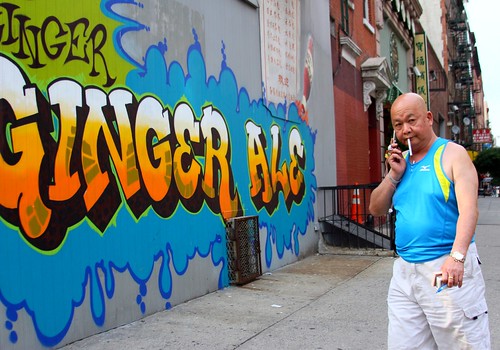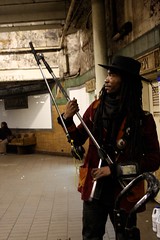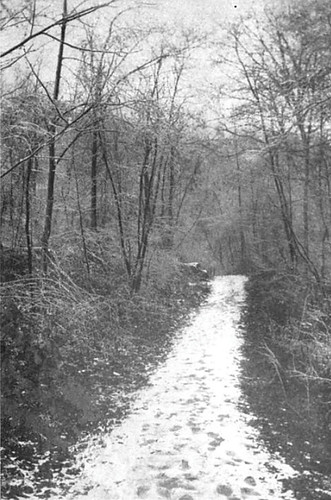 Michelle Rick
Michelle Rick Good morning, East Village
The sounds of the citywide free festival Make Music New York could be heard in the East Village yesterday. The Village Beat found a small outdoor concert in Astor Place, hosted by the local live performance venue, Joe’s Pub.
The performance artist Liu Bolin camouflaged himself into the Kenny Scharf mural yesterday near the intersection of Houston Street and Bowery. The Wooster Collective shared photos of the wall’s transformation.
But more outdoor art might be put on hold this week; The Weather Channel predicts several days of off and on thunderstorms, making the jump into summer a wet one.
 Kenan Christiansen James Metalarc, 37, taking down equipment after playing a set at Astor Place Station. The popular street musician is considering quitting because of regulations that prevent him from playing.
Kenan Christiansen James Metalarc, 37, taking down equipment after playing a set at Astor Place Station. The popular street musician is considering quitting because of regulations that prevent him from playing.Last month, The Local brought you the story of James Metalarc, a street musician who plays Jimi Hendrix tunes at the Astor Place subway station.
On Thursday, Mr. Metalarc, who is also known as Jamal Butler, contacted the blog to report his growing frustrations over MTA regulations which allow police to drive him out of the subway. He added that he was thinking about quitting.
“What I do, I do for a living,” Mr. Metalarc said in a telephone interview. “I’m not hurting anybody.”
His problems arise from the type of music he plays. The MTA’s “Rules of Conduct” do not allow musicians using sound amplifiers to perform on subway platforms, citing that the noise level can interfere with subway operations. Even in the designated performance mezzanines, amplifiers must be kept below the 85-decibel limit.
“I don’t see how that is fair,” Mr. Metalarc said. “I’ve seen a guy down there banging on a full drum set. He can’t control how loud he is, but at least my amp has a volume control.”
Read more…
 An early photo of a Native American trail from the Inwood section of Manhattan Island. Photo by W.L. Calver, originally published 1922.
An early photo of a Native American trail from the Inwood section of Manhattan Island. Photo by W.L. Calver, originally published 1922.Plans to pedestrianize Astor Place and expand Cooper Square Park, which were presented to Community Boards 2 and 3 on January 6th, are moving toward approval from the city’s Public Design Commission. A few wrinkles must be smoothed out, however, before the blueprints can be handed over to a contractor. Perhaps the most interesting community petition made thus far is that an old Native American trail, which ran through the area, be memorialized in the new design.
The Local thought that in light of the request, this might be the perfect time to look at the oft-forgotten historical presence of Native Americans in the East Village.
Once upon a time, Manhattan was a remote offshoot of North America with dense forests full of wildlife, open fields overgrown with rich grass, and bountiful harbors teeming with oysters, lobsters, and fish.
According to Edwin G. Burrows and Mike Wallace’s Pulitzer Prize-winning book, Gotham: A History of New York City to 1898, tribes of Lenape Indians set up camp on this bountiful land, which they called Lenapehoking or, “where the Lenapes dwell,” more than sixty-five hundred years ago. They moved about frequently in groups of roughly 200 people at a time, hunting deer and wild turkeys, fishing, and foraging for nuts and berries.
Some fifty-five hundred years later, they had established more static communities thanks, in large part, to agricultural advancements. When Europeans arrived in 1524, approximately 15,000 Lenape Indians of various tribes lived in what is now New York City.
Read more…






